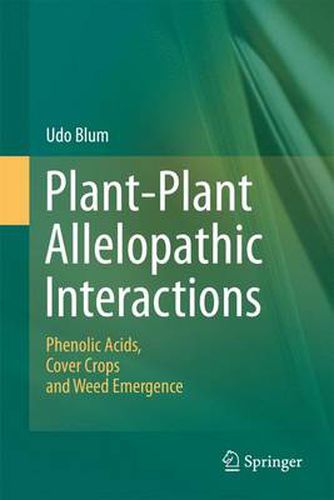Readings Newsletter
Become a Readings Member to make your shopping experience even easier.
Sign in or sign up for free!
You’re not far away from qualifying for FREE standard shipping within Australia
You’ve qualified for FREE standard shipping within Australia
The cart is loading…






This title is printed to order. This book may have been self-published. If so, we cannot guarantee the quality of the content. In the main most books will have gone through the editing process however some may not. We therefore suggest that you be aware of this before ordering this book. If in doubt check either the author or publisher’s details as we are unable to accept any returns unless they are faulty. Please contact us if you have any questions.
In an effort to implement conservation measures farmers have used a variety of production methods, including the use of reduced or zero tillage and cover crops. One benefit of these production methods has been early season weed control. The literature suggests that a variety of mechanisms may be involved, among them the allelopathic effects of phenolic acids. This retrospective analysis addresses the following: How likely are phenolic acid concentrations and environmental conditions in wheat no-till cropping systems for the inhibition of annual broadleaf weed emergence? and Do phenolic acids have a dominant role or are they just one component of a larger promoter/modifier/inhibitor complex? The book covers allelopathic plant-plant interactions, laboratory and field experiments, and future research. It uses a journal format, provides justifications for procedures used, if-then hypotheses, and cons and pros so that readers can reach their own conclusions.
$9.00 standard shipping within Australia
FREE standard shipping within Australia for orders over $100.00
Express & International shipping calculated at checkout
This title is printed to order. This book may have been self-published. If so, we cannot guarantee the quality of the content. In the main most books will have gone through the editing process however some may not. We therefore suggest that you be aware of this before ordering this book. If in doubt check either the author or publisher’s details as we are unable to accept any returns unless they are faulty. Please contact us if you have any questions.
In an effort to implement conservation measures farmers have used a variety of production methods, including the use of reduced or zero tillage and cover crops. One benefit of these production methods has been early season weed control. The literature suggests that a variety of mechanisms may be involved, among them the allelopathic effects of phenolic acids. This retrospective analysis addresses the following: How likely are phenolic acid concentrations and environmental conditions in wheat no-till cropping systems for the inhibition of annual broadleaf weed emergence? and Do phenolic acids have a dominant role or are they just one component of a larger promoter/modifier/inhibitor complex? The book covers allelopathic plant-plant interactions, laboratory and field experiments, and future research. It uses a journal format, provides justifications for procedures used, if-then hypotheses, and cons and pros so that readers can reach their own conclusions.